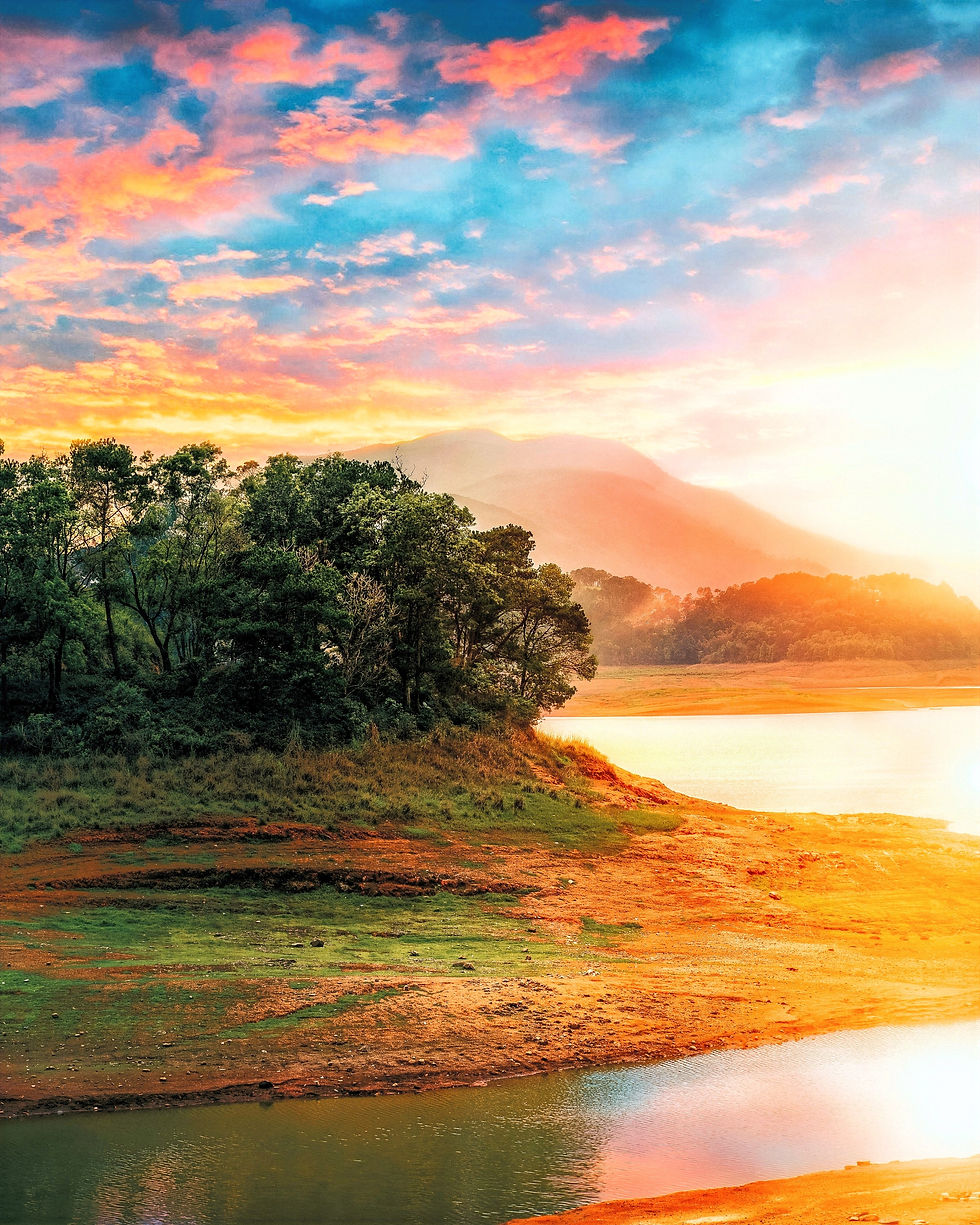UNTAPPED AND UNEXPLORED MEGHALAYA
- preetyriwaz

- Feb 23, 2021
- 4 min read
Updated: Mar 25, 2021

Endowed with incredible natural beauty, Meghalaya is one of the most beautiful states in Northeast India. Meghalaya has great tourism potential, which is still untapped and unexplored.
MEGHALAYA IN ONE SHOT
ORIGINMeghalaya was previously part of Assam, but on 21 January 1972, the districts of Khasi, Garo and Jaintia hills became the new state of Meghalaya.
LOCAL LANGUAGEEnglish is the official language of Meghalaya. The other principal languages spoken include Khasi, Pnar and Garo.
LINEAGE SYSTEMUnlike many Indian states, Meghalaya has historically followed a matrilineal system where lineage and inheritance are traced through women; the youngest daughter inherits all wealth and she also takes care of her parents.
AMAZING FACTS ABOUT MEGHALAYA
GREEN COVERAGE:
The state is the wettest region of India, recording an average of 1200 cm of rains a year.
The Meghalaya forests are considered to be among the richest botanical habitats of Asia. About 70% of the state is forested. The Meghalaya subtropical forests ecoregion encompasses the state; its mountain forests are distinct from the lowland tropical forests to the north and south. The forests are notable for their biodiversity of mammals, birds, and plants. About 70% of the state is forested, of which 9,496 km2 is dense primary subtropical forest. These forests receive abundant rainfall and support a vast variety of floral and faunal biodiversity.
SACRED GROOVES:A small portion of the forest area in Meghalaya is under what is known as "sacred groves" (see Sacred groves of India). These are small pockets of an ancient forest that have been preserved by the communities for hundreds of years due to religious and cultural beliefs. These forests are reserved for religious rituals and generally remain protected from any exploitation. These sacred groves harbour many rare plant and animal species. The Nokrek Biosphere Reserve in the West Garo Hills and the Balaphakram National Park in the South Garo Hills are considered to be the most biodiversity-rich sites in Meghalaya. In addition, Meghalaya has three wildlife sanctuaries. These are the Nongkhyllem Wildlife Sanctuary, the Siju Sanctuary, and the Bhagmara Sanctuary, which is also the home of the insect-eating pitcher plant Nepenthes khasiana.
Home For Thousands
Meghalaya also has a large variety of mammals, birds, reptiles and insects. The important mammal species include elephants, bear, red pandas, civets, mongooses, weasels, rodents, gaur, wild buffalo, deer, wild boar and a number of primates. Meghalaya also has a large variety of bats. The limestone caves in Meghalaya such as the Siju Cave are home to some of the nation's rarest bat species. The Hoolock Gibbon is found in all districts of Meghalaya. Common reptiles in Meghalaya are lizards, crocodiles and tortoises. Meghalaya also has a number of snakes including the python, Copperhead, Green Tree Racer, Indian Cobra, King Cobra, Coral Snake and Vipers.
Living Root BridgeMeghalaya double-decker and single-decker root bridges are unique in the world and are a sight to behold. The bridges are tangles of massive thick roots, which have been intermingled to form a bridge that can hold several people at a time. Khasi people have been trained to grow these bridges across the raised banks of streams to form a solid bridge, made from roots. The living bridges are made from the roots of the Ficus elastica tree, which produces a series of secondary roots that are perched atop huge boulders along the streams or the riverbanks to form bridges. The root bridges, some of which are over a hundred feet long, take ten to fifteen years to become fully functional, but they’re extraordinarily strong – strong enough that some of them can support the weight of fifty or more people at a time. The bridges are alive and still growing and gain strength over time.
Mawsmai Caves
Mawsmai caves, a few miles further away from Cherrapunjee is fast emerging as a new tourist destination. The caves, made of limestone, spellbind the visitor the moment he enters the caverns. The entrance is well lit, but as one enters further inside, the eerieness and the mystery start unfolding.
Nohkalikai Falls
Nohkalikai Falls is the tallest plunge waterfall in India. Its height is 1115 feet (340 metres). The waterfall is located near Cherrapunji, one of the wettest places on Earth. Nohkalikai Falls are fed by the rainwater collected on the summit of the comparatively small plateau and decrease in power during the dry season in December - February. Below the falls there has formed a plunge pool with unusual green collared water.
The Scotland of the EastShillong is the capital city of the State, as well as the District, headquarter of East Khasi Hills District. Shillong is the only hill station in the country that is accessible from all sides.

Don Bosco Centre for Indigenous CulturesA three-in-one Institution combining a museum with a research and publication centre, for promoting and preserving the rich cultural heritage of North East India -a unique fusion of all the sister states under one roof. With seven stories, 56,000 square feet of floor space and 15,154 square feet of display wall space, it ranks among the top 36 or so cultural centres of its kind in the Salesian world.
Ward’s Lake A refreshing pool surrounded by beautiful gardens in the heart of the city. The serene lake and the cool shades of trees around it make it a nice spot for sightseeing and boating. This man-made lake is one of a kind in Shillong.
Elephant Falls
Elephant Falls was the British name of what the local Khasi people once referred to as Ka Kshaid Lai Pateng Khohsiew (or "Three Steps Waterfalls") since the falls actually consisted of three sections in succession.




Comments